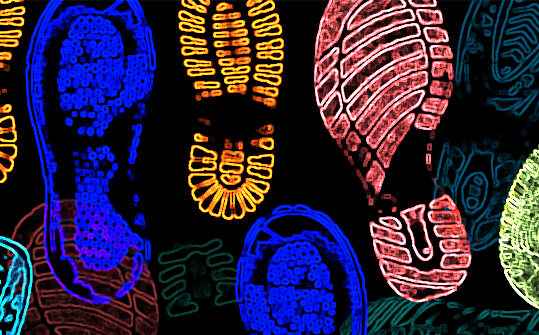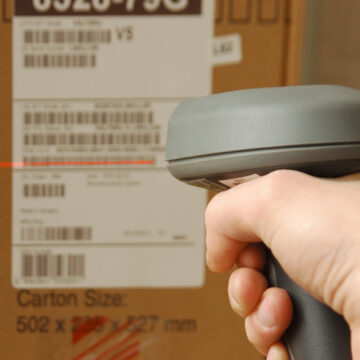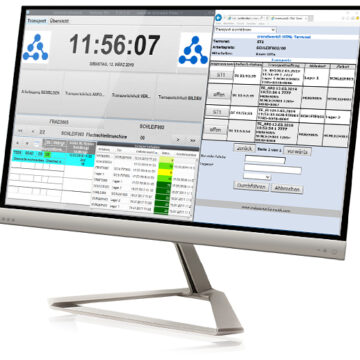IT challenges in the area of traceability & tracking

real time integration, traceability and multi-level plausibility checks
More than ever, the call for lot size 1 is challenging companies when designing their production processes. An added challenge involves the requirements in respect of the component and batch traceability of the goods produced. The answer lies in software-based traceability solutions which not only focus on traceability but also ongoing optimization of the manufacturing processes.
Component tracing / traceability is nothing brand new; we have encountered it for many years and yet, it is more relevant TODAY than ever.
What is traceability?
The term ‚traceability‘ means being able to trace the product across the entire production process in order to be able to limit any damage in case of an error on the one hand and to ensure optimal production processes and consequently increased quality on the other. Traceability is becoming increasingly important in terms of the aspects of warranty, supplier evaluation, consumer protection, etc. In some sectors, e.g. automotive, medical technology, food industry, aviation and many more, it is an essential means for complying with legal requirements.
In these fast-paced times, we constantly encounter new trends. We are bombarded daily with buzzwords such as smart factory, big data, artificial intelligence etc. The trend is clearly moving from capturing a serial number and individual process data to processing mass data with the aim of ensuring complete and comprehensive transparency across the entire manufacturing process.
The requirements currently placed on MES manufacturers in terms of project implementation increasingly concern the following areas:
- real time integration
- continuous traceability
- multi-level plausibility checks
Real Time Integration
Modern production environments are characterized by ever shorter cycle rates. Traceability solutions must keep pace with this trend and be able to collect and store data at high speed and loss-free. Industrie Informatik calls this ‘real time integration’ with requirements within seconds or, in some applications, even significantly less. Unstructured mass data is transferred from the OT – the operation technology or machine level – in large quantity summaries and at enormous speed.
The major challenge now is to consolidate this mass data in the classical operation data which are collected via the terminal or the worker on the shop floor (IT/OT convergence). It is essential for the traceability and optimization of the production processes to identify the key process data, to link them with the order, process or component data in order to then derive meaningful analyses from them.
Traceability & plausibility check
Moreover, the continuous traceability also represents major challenges for a modern software solution. Alongside the mapping of various process steps with, at times, varying traceability requirements for each step, one must also consider the integration of multi-level plausibility checks which must function effectively in the production flow.
Multi-level means that several checks are performed in a specific order for a work step. The objective of plausibility checks is to draw conclusions from certain production or process data regarding the quality of the component to enable subsequent classification of components into good, reject or rework parts.
Here, a Traceability solution must also consider the individual requirements of the customer. Following an example of the assembly area of an electronics manufacture for multi-stage plausibility checks:
1. Station check: Is the component checked as “okay“?
2. Previous production step: Was the previous step tested successfully?
3. BOM check: Are the materials used suitable for the produced component?
4. Label check: Does the number of the label match the material number of the component?
Aside from embedding such multi-level plausibility checks into the flow and correctly evaluating a component, it is also essential to ensure a direct exchange of information with the system itself. Finally, it must be possible to return the classification of a component to the system and trigger a relevant action, e.g. eliminating a reject part from the production process or stopping the system.
Visualization using Portal
The visualization of traceability data is performed in cronetwork Portal where flexible, customized processing for various user groups such as production staff, foremen, management and service center, is possible. Various search options are available, for example, to identify components which were packed in the same box. Finally, traceability data also ensures process optimization and quality enhancement as well as quality verification for customers and authorities.
Benefits of cronetwork MES
The MES solution cronetwork allows you to automatically or manually collect a variety of data about your products. A bidirectional interface to the ERP system enables the validation of the collected data with respect to the available stock. Moreover, the fine-grained database allows you comprehensive data and optimization measures.
Thus, the MES solution cronetwork ensures
- seamless traceability
- mapping of a variety of production processes
- very fast reaction times
- implementation of plausibility checks
- visualization and analysis of traceability data per user group
cronetwork not only gives you answers to questions such as when, where, by whom, under which framework conditions and using which materials production took place, but also improves your processes and takes a big step towards a digital twin.






